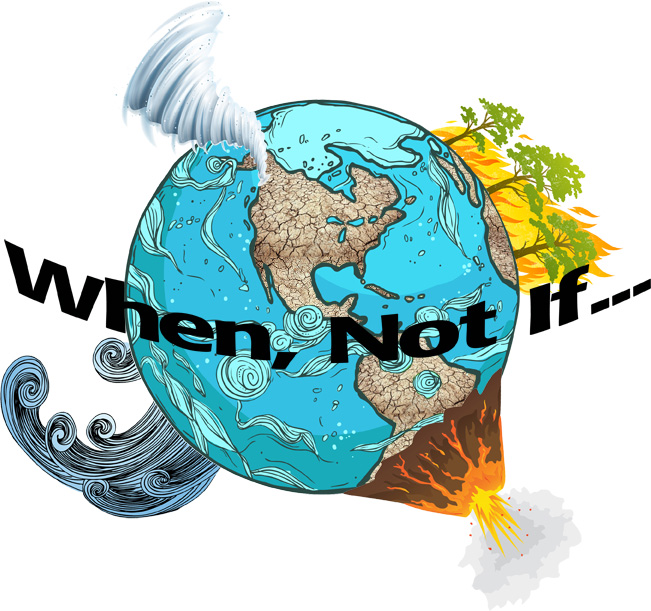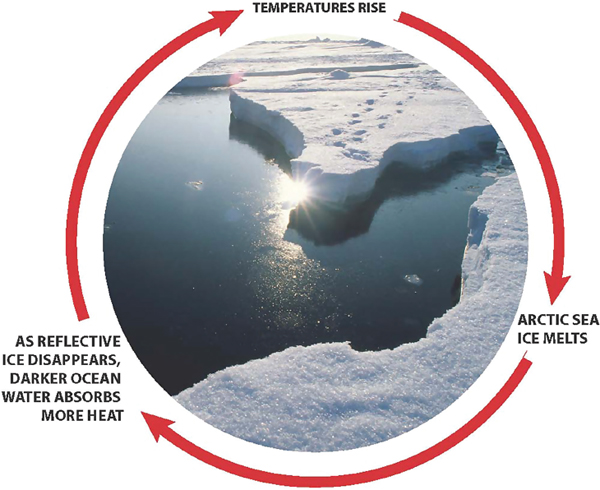Mission Statement:
When natural disasters start to happen is the real question behind climate change, not if they will happen. People have already started to see the consequences of rising CO2 levels, with the 2-degree temperature rise and global CO2 levels passing 404 parts per million (ppm). Our goal at When, Not If… is to ban driving so we can reduce CO2 levels, which will lessen climate change’s impact on the Earth.

 Earthquakes Earthquakes |
 Tornadoes and Hurricanes Tornadoes and Hurricanes |
 Tsunamis Tsunamis |
 Volcanoes Volcanoes |
 Drought Drought |
 Starvation Starvation |
 Migration Migration |
 Forest Fires Forest Fires |
Positive Feedback Loop:
Rising CO2 levels will cause worldwide devastation similar to that of the end of the last Ice Age. To sustain human life on Earth, the ideal level of CO2 is 350 ppm. Scientists hypothesize that at 400 ppm the Earth will begin to spiral into becoming an uninhabitable planet for humans. Here is how:
Due to increased CO2 in the atmosphere, ice (white, which reflects sunlight) will melt, creating a larger ocean surface area (dark blue, which absorbs sunlight). The ocean absorbs more heat than ice does, making the ocean warmer and melting glaciers faster. This would “ultimately warm [the] global climate” because the ice on Earth stabilizes the world’s temperature, and without it the Earth’s surface would become warmer (1). This would continue in an exponentially accelerating loop until the Earth stabilized at an unknown average surface temperature too hot for humans to survive.

In March 2016 the CO2 levels reached 404.83 ppm; in October 2015 when I started research it was at 398.29 ppm. These numbers show that the amount of CO2 being produced is not decreasing, which is scary because scientists have predicted that reaching 400 ppm would be the beginning of the end of the world. Here are a few ways that climate change will affect earth.
(1) Poppick, Laura. “Sea Ice-Abode: Earth’s Chilling Reflection.” Marine Climate News. University of
Maine, July 6, 2011. Web. Nov. 16, 2015.